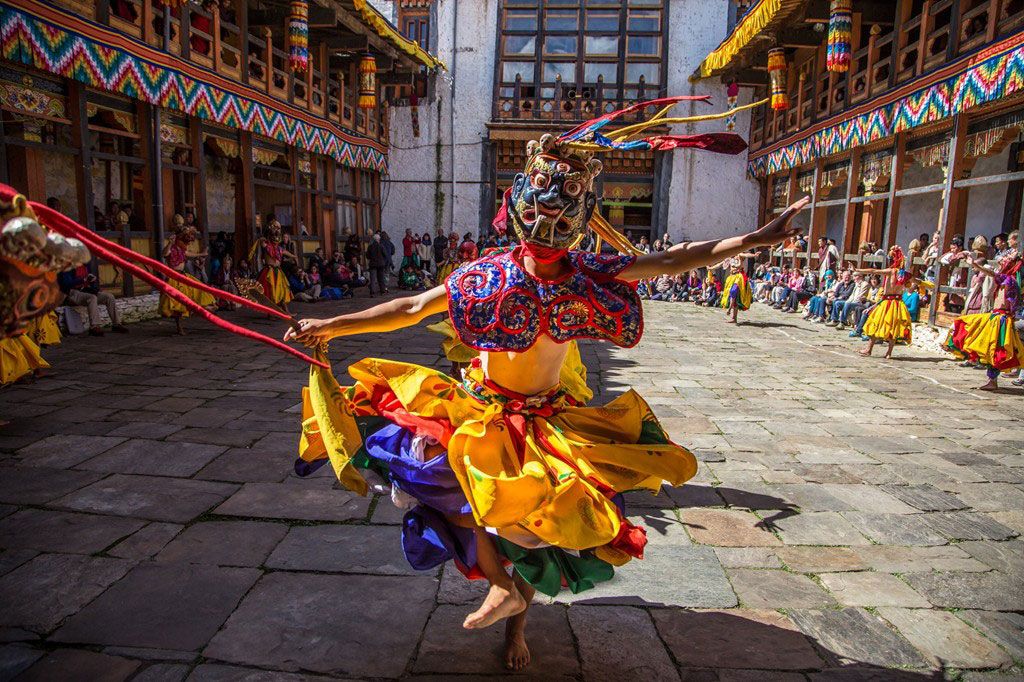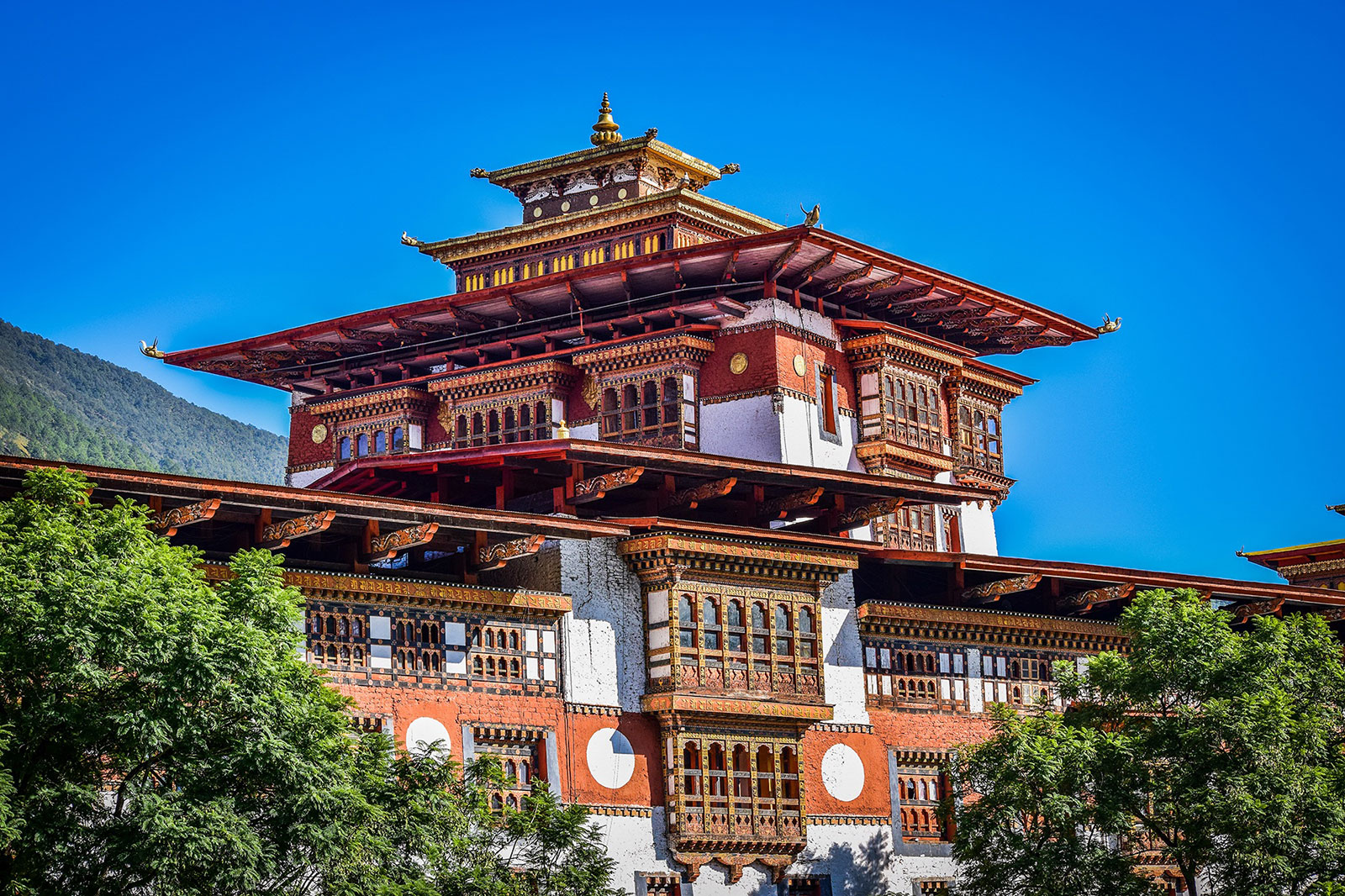Jomolhari Trek I is a trekking in Bhutan and you can book through Himalayan travel company. The trek is longer one of the two Jomolhari routes and the most popular trek in Bhutan with altitude differences of 2500m (lowest) and nearly 5000m (highest point). The trek offers a wide range of landscape, fauna and flora. The highlight of this trek is the spectacular view of Mount Jomolhari from Jangothang, the Jomolhari base camp. Nearly the whole trek goes through a small part of the Jigme Singye National Park, passing a few of the Yak herders’ settlement and the remotest region of Lingshi. While on the trek one should be physically fit to enjoy the majestic mountain views, endure thin air, serenity and the wilderness of the landscape.
Note: The trekking tour program does not include the total duration. Please select the trek of your choice and contact us. We will send you the program and duration. You can also combine the trek with the cultural tours. The trek which is less than five nights is the cultural trek that is done with the cultural tours.
Duration: Nine days
Maximum Elevation: 4930m
Highest Camp: 4080m
Standard: Medium
Best Seasons: March-June & October-November
Start: Drukgyel Dzong, Paro
Finish: Dodena, Thimphu
Summary
Jomolhari Trek I is the longer one of the two Jomolhari routes and the most popular trek in Bhutan with altitude differences of 2500m (lowest) and nearly 5000m (highest point). The trek offers a wide range of landscape, fauna and flora. The highlight of this trek is the spectacular view of Mount Jomolhari from Jangothang, the Jomolhari basecamp. Nearly the whole trek goes through a small part of the Jigme Singye National Park, passing a few of the Yak herders’ settlement and the remotest region of Lingshi. While on the trek one should be physically fit to enjoy the majestic mountain views, endure thin air, serenity and the wilderness of the landscape.
Day 1: Drukgyel Dzong – Sharna Zampa
(Distance: 17km, Duration: 4-5 hours, Ascent: 360m, Descent: 80m, Camp altitude: 2850m).
Drive up to Drukgyel Dzong (2580m) where the motor able road ends, and the trek begins. With a gradual climb the trail follows the Paro Chhu passing through beautiful meadows, paddy fields and impressive farm houses. After about four hours you will reach the army check point at Gunitsawa village. At the check point your trek permit (provided by your tour operator) will be checked and endorsed. The campsite is on the opposite side of the river, not far from Gunitsawa.
Day 2: Sharna Zampa – Thangthangkha
(Distance: 22km, Duration: 7-8 hours, Ascent: 770m, Descent: 10m, Camp altitude: 3610m).
On this long day, the trail continues with lots of gentle climbs up and down. After going uphill through the river valley, you enter the Jigme Dorji National Park. The valley finally narrows gradually to a mere path which descends to a meadow where a camp will be set up. From here, if weather permits, you will have the first great view of Mount Jomolhari.
Day 3: Thangthangkha – Jangothang
(Distance: 19km, Duration: 5-6 hours, Ascent: 480m, Camp altitude: 4080m)
If you have not seen Mount Jomolhari last evening, you have a great chance in the early morning to get a great view. This morning the trek continues up the Paro Chhu valley, which widens into patches of alpine meadow with scanty forest growths. Cross an army outpost along the way and enjoy a spectacular view of high mountain ridges and snow-capped peaks. Yaks and the herders’ homes become a regular feature of the landscape. Passing the villages Soe, Takethang and Dangochang is another asset on this day. Reaching Jangothang, one of the most beautiful campsites of the Himalayas, you will again have a spectacular view of Mount Jomolhari.
Day 4: Halt at Jangothang
The day in Jangothang provides plenty of possibilities for day hikes with great views on lakes and snow capped mountains such as Jomolhari and Jichu Drake. There are good chances to spot some blue sheep on the upper slopes of the valley. Jangothang is a perfect environment for your acclimatisation. Trek up to Tosoh or hike around the area. There are good short hiking trails in three directions. Jumolhari and its subsidiary mountain chains in the west, Jichu Drake to the north and a number of unclimbed peaks to the east.
Day 5: Jangothang – Lingshi
(Distance: 18km, Duration: 6-7 hours, Ascent: 840m, Descent: 870m, Camp altitude: 4010m)
After 15 minutes from the camp the trail climbs rapidly for about half an hour and then becomes a gradual ascend to the Nyilila pass at 4870m. While on the climb enjoy the surrounding. You might see herds of blue sheep grazing on the slopes of the mountains. From the pass you will have spectacular views of Mt. Jomolhari, Jichu Drake and Tsherimgang, all of them rising above 7000m. On the way down to the camp you will pass by some of the yak herders’ tent, made from yak wool, where the herders take shelter while on the move to various pastures for their yaks. As you come down into the Lingshi basin, you get a wonderful view of Lingshi Dzong on a clear day. Tserimgang and its glaciers rise up at the north end of the valley. The campsite is next to a stone hut, just before you reach Lingshi Dzong.
Day 6: Lingshi – Shodu
(Distance: 22km, Duration: 8-9 hours, Ascent: 940m, Descent: 920m, Camp altitude: 4080m)
The trail climbs up to the Yelila pass at an altitude of 4930m. From the pass, on a clear day you will get an excellent view of Jumolhari, Tserimgang and Masanggang. The trek from the pass to the campsite at Shodu is a steep downhill.
Day 7: Shodu – Barshong
(Distance: 16km, Duration: 5-6 hours, Ascent: 250m, Descent: 670m, Camp altitude: 3710m)
The trail follows the Thimphu Chhu through rhododendron forests, past beautiful waterfalls along the way. The valley narrows till the path takes to the slopes and gradually ascends to the ruins of Barshong Dzong.
Day 8: Barshong – Dolam Kencho
(Distance: 15km, Duration: 4-6 hours, Ascent: 290m, Descent: 640m, Camp altitude: 3320m) The trail descends down to the Thimphu Chhu river valley, through dense forests of rhododendron, birch, conifer, maples and bamboos and then ascends to pasture lands. The camp is in a meadow.
Day 9: Dolam Kencho – Dodena
(Distance: 8km, Duration: 3-4 hours, Ascent: 500m, Descent: 930m)
The trail continues through forested areas winding up and down and through a small pass. Langurs (monkeys) can be seen along the way. In Dodena, you will exit the Jigme Dorji National Park and reach the road head next to an impressive cantilever bridge.









